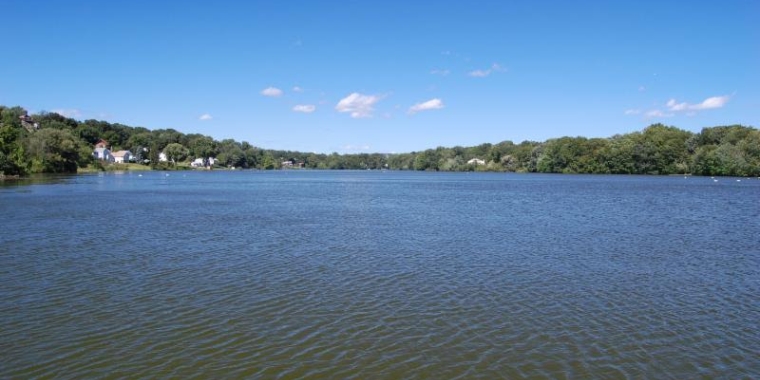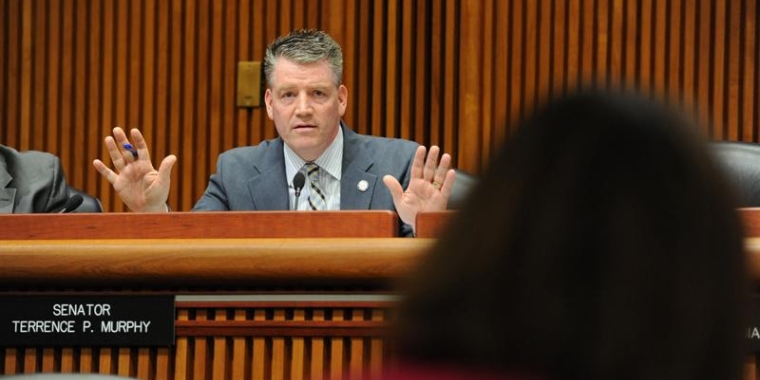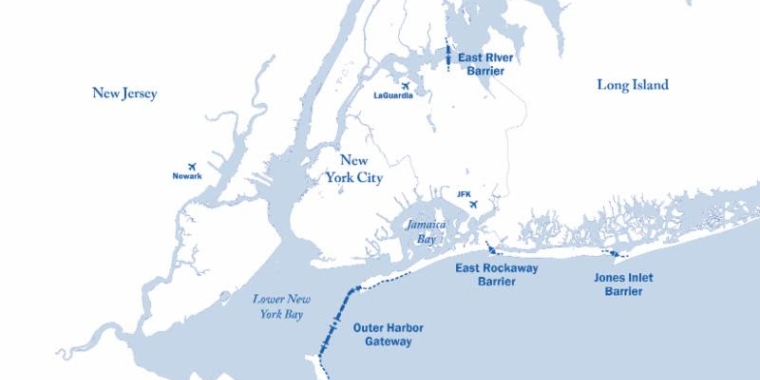
Gov Signs Senator Murphy's Bill That Drives Waterfront & Environmental Revival For Four Local Lakes
August 2, 2018

Cortlandt, NY - August is the height of the outdoor recreation season. Children are out of school, swimming in local lakes. Anglers are bragging about the one that got away, and sun worshippers are on the beach catching the rays. However, some local lakes are being threatened by pollution, erosion, or poor wastewater treatment.
Senator Terrence Murphy is helping several local communities gain access to a new funding stream that can ignite a rebirth for local lakes both economically and environmentally. Senator Murphy sponsored S7603A, which designates Cortlandt, Dickiebusch, Furnace Brook and Meahagh lakes as inland waterways for purposes of waterfront ane environmental revitalization.
"With numerous impairments reported for these lakes, it is important that local communities have the resources to develop long-term plans for waterfront revitalization," said Senator Murphy. "Designating these lakes as inland waterways will help support local economic development, spur historic preservation, and strengthen environmental protection."
Cortlandt Town Supervisor Linda Puglisi stated, "The preservation and protection of our lakes, waterbodies, watersheds, ecology and environmental issues are all very important to me, our town and to our community. I applaud any efforts the state can do to achieve these goals and thank Senator Murphy."
"Lake Meahagh and the other lakes are beautiful lakes that we want to keep healthy," said Buchanan Mayor Theresa Knickerbocker. "Lake Meahagh has a lot of history. Everyone enjoys being on the lake, whether they're fishing or skating. It's a great place for members of the community to get together."
By designating these important lakes as inland waterways, municipalities along their banks are now eligible for Department of State and Environmental Protection Fund waterfront revitalization grants. Local communities will be able to pursue improved water quality, preservation of open space and wildlife habitat, promotion of tourism and economic development opportunities, as well as combating threats to the waterways, including pollution, stormwater run-off, and invasive species.
Lake Meahagh has a long and storied history. At the turn of the 20th Century, the lake often froze solid during the winters from Verplanck to Buchanan. The Knickerbocker Ice Company harvested blocks of ice from the lake, trucking the ice to New York City. Although the advent of electric refrigerators eventually drove the company out of the area, it is still affectionately referred to by locals as Knickerbocker Lake or Knickerbocker Pond.
Residents and visitors have enjoyed fishing, outdoor ice skating and bald eagle watching at Lake Meahagh. An increase of phosphorous and runoff is threatening the lake's ecological health. Dickiebusch Lake and Furnace Brook are known as must-be-seen-to-be-believed destinations for fishing, kayaking, and swimming, as is Cortlandt Lake, a man-made lake completed in 1929. Unfortunately, they share Lake Meahagh's classification as bodies of water that are impaired or priority impaired.
Cities, towns, and villages along major coastal and inland waterways are encouraged to prepare a Local Waterfront Revitalization Program (LWRP). A LWRP is a locally prepared, comprehensive land and water use plan for a community's natural, public, working waterfront, and developed waterfront resources. It provides a comprehensive framework within which critical waterfront issues can be addressed.
LWRPs address a wide range of issues important to waterfront communities including waterfront redevelopment; expansion of visual and physical public access to the water; coastal resource protection, including habitats, water quality, and historic and scenic resources; and provision for water-dependent uses, including recreational boating, fishing, and swimming. As part of the preparation of a LWRP, a community identifies long-term uses for its waterfront and an implementation strategy, including enacting or amending appropriate local development controls.



